After the Southern side of the Julian Alps, we headed for the area nearer the Italian Border and particularly Kobarid, on the Northern side of the same Julian Alps. On the way there, we went through Kranjska Gora, probably the most famous ski resort in Slovenia and then up the Vrsic Pass. The road was built mainly by Russian prisoners during World War I. In 1916, 400 workers were killed by an avalanche; in their memory of all who lost their lives building the road, a small chapel was erected on the site of the tragedy.
There was a group of Canadian Cyclists there when we arrived – a large bus had just pulled away. I felt sorry for the cyclists having to do the pass (which is quite steep at times) on their bicycle, then I remembered that we were about to do a walk (with steep climbs as well) and we did not get any benefits, or a chance to rest, going back down! The place around the chapel, as always, is very peaceful and inspiring. I was not able to find out how many more Russian Prisoners died of other causes during the construction of the road – I can only imagine though; conditions could not have been easy.
When we arrived at the top of the pass, we were in the clouds. Visibility: about 5 meters. As we were getting ready for our walk, I asked Ingrid to tell me again why we were doing this and she simply said: “For the view!” And believe it or not, she was not kidding. Just as we finished the first big climb, we cleared the clouds! We could see forever up and horizontally, nothing down. There is a road down there somewhere, about 500 m below the top of the clouds.
For the next hour, we hike in and out of the clouds as the path we follow goes up a little or a little down. The views are more spectacular one after the other. We are on a ledge with the pass on one side and a large valley, also cloud covered, on the other – spectacular does not start to give the full impact.
One more panorama! Just another attempt to help you share in the magnificence. We seemed to be alone too – I guess a lot of people must have given up at the bottom.
The view across the valley is amazing. The mountains in the distance are in Slovenia, Austria or Italy. Horizontal visibility is excellent – vertical visibility – well! – not so good.
We get to a small plateau between higher peaks. There are small ponds which create excellent reflections of the surrounding mountains since there is absolutely no wind to ripple the surface of the water.
We climb again to the top of a small peak that juts out into the valley called Mount Sleme. We can see that the clouds are slowly breaking up and so the end of the perfect views is near. With a little bit of luck, we can also see the floor of the valley in a few minutes. This is a good spot to wait anyway.
Good spot for a group photo. It feels like we are on top of the world.
Ingrid decided to exorcise the clouds to see if they could vanish quicker – or she is just thrilled that she was right when she told me we are going up for the view!
I thought it would be a good idea to re-create the statue near Lake Bohinj, pointing at the peaks we are about to explore next.
It is time to come back down where Giuseppe had been busy preparing one of his great pic-nics. The clouds are essentially gone except for a few lingering ones in the narrower side valleys.
When we arrive at the pass, we were not disappointed. Giuseppe had to fight cyclists and a dozen sheep to save the table and our food. I think the sheep were more difficult than the German cyclists…
We had cheese from Bohinj, salami and other local meats, excellent salad, great bread and a bottle of wine – all that after an excellent walk which made us very hungry. However, we were never able to finish all the food that Giuseppe prepared for us…
After lunch, we go for a shorter walk to another water fall and more fantastic scenery.
I liked the humour of this sign in the car park. The ‘carp’ is the local symbol of the Soca River. I understand all instructions except for the one about swinging from the bridges – I would not even have thought of that, so are they creating the problem by telling people that such an activity may be fun? Does that mean I am expected to swing from bridges where they do not have this sign?
We stopped in Bovec at the Tourist Information Center which is much more than that, with excellent displays of the local attractions. There was also a photo exhibition with excellent shots from local artists. The view from the center was not too bad either.
The is where we came down from…
Giuseppe gets to relax a little between all the driving that he has been doing. The weather is again great and the temperature just right.
In late afternoon, we arrive at our hotel for the next two nights in Kobarid. Actually, we are about 3 km outside of town, in an old farm house that was used as a field hospital during World War I. In fact, this whole area was the theatre of one of the biggest campaigns in WWI, one that I had not heard of before (but then, I never studied either war in school – I guess too recent history!). The white building in this photo is a monument built in the memory of the Italian soldiers who died in this campaign. 7000 soldiers are buried in the monument – several thousands are just “unknowns”. The monument was inaugurated by Benito Mussolini in 1938 while this area was still part of Italy.
The sun setting gave the surrounding mountains quite a glow, especially Mount Krn, which according to Ingrid is very often covered by clouds – we are lucky to see this.
I like sunsets – I am sure you know that by now!
As the sun sets, the near full moon rises above the mountains which are still glowing in the rosy sunset light. The Soca Valley is very peaceful at the end of the day.
The sun is gone, but the light still shines on Mount Krn for a few minutes. This is the time at sunset when things happen the quickest. This light, with the red glow, only happens for literally 1-2 minutes before fading to black.
The early morning light can be nice too. There is ground fog as the sun tries to come up.
We set off from Kobarid on the Historic Walk that leads to the Italian Charnel House. The road is lined with the Stations of the Cross.
The view of the Soca River and Valley from the Italian Charnel House is very nice, especially with the remnants of the early morning ground fog. I could not take a good picture of the monument itself, as all were facing the low sun…
Everywhere we walk, we find traces of the campaign that raged here. These are steps cut out of the rock, and going through the rock; they are part of the supply route to where the battle was fought: at the top of the hills and mountains. Everything, including heavy artillery, had to be manhandled up these paths, more often than not, under enemy fire.
This was probably an armoury where weapons and munitions were stored. We saw the remains of observation and defense posts as well as rough huts that were built for the officers.
We crossed the Soca River to start up the next mountain, on to the next waterfall. We had already noticed that all the rivers in this area look like there has been a recent disaster at the local dairy – I have never seen water this naturally milky.
We walked up to the Kozjak Stream Waterfall, different than most as it is essentially inside of a cave.
OK – not much difference between the two photos, but the second is another panorama montage of three separate shots which gives a better quality of image.
I spent the afternoon in Kobarid. the others went for another walk but I needed more urban surrounds and I wanted to get a better look at the Italian style of Kobarid. As the sun has rotated, I can now take better pictures of the Italian Charnel House from the city. Each of the niche that you see under the chapel – three levels of them – is a burial for 8-10 known soldiers, or 500 unknown remains – there are many more of the latter kind.
The city is full of contrasts, where East meets West, where Alpine and Mediterranean cultures meet, but do not clash.
Kobarid is dominated by mount Krn and the high ridge along which the war raged – Initially, it was just Italian troops against Austrians. Later many Eastern countries sent soldiers (or were forced by the Austrian to send soldiers). Finally, in 1918, the Germans came as well and the front collapsed very suddenly and catastrophically. The Italians retreated 100’s of km before they could regroup and fight back.
The tonw’s main church certainly does not date from Italian time. It has an unmistakable Northern style more prevalent in Austria and Germany.
That evening, we had another great sunset before a second great dinner. This is not the best panorama that I have done and I am not sure why it did not work any better. I will have to try again later to get a better result, but I do not want to delay the publication of this episode just to try to do make improvements. I like it because it is a sunset with the full moon!
In Fact, Kobarid is home to two of the top young chefs in Slovenia and one of them owns the hotel where we stay. It just happens that her husband is one of the top someliers in Slovenia.
We had a feast that was also accompanied by excellent wine. What a great way to end our stay in the Julian Alps.
(3049 Page Views)

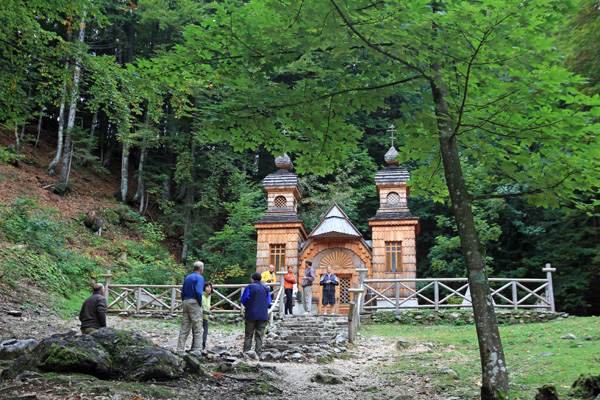
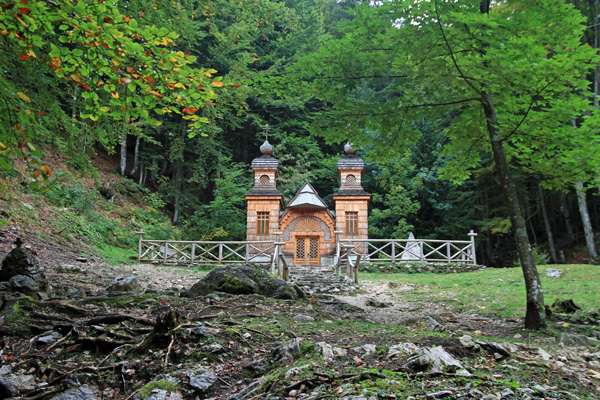

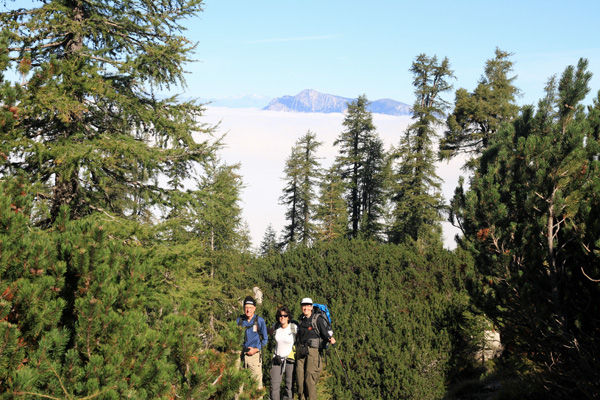
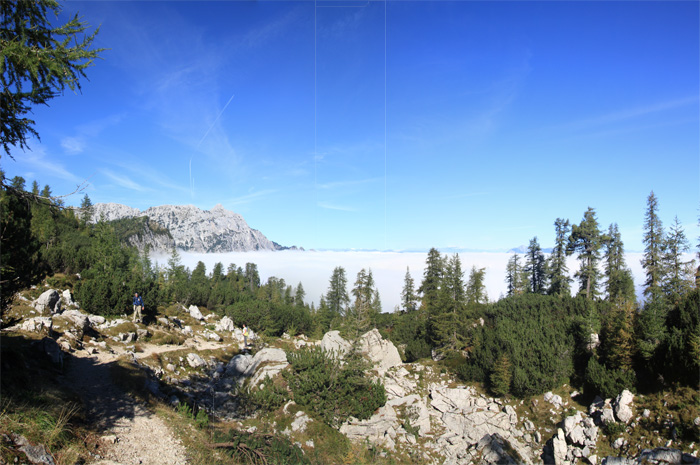
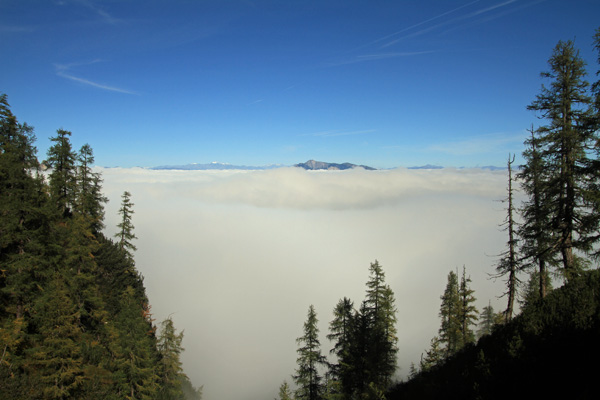
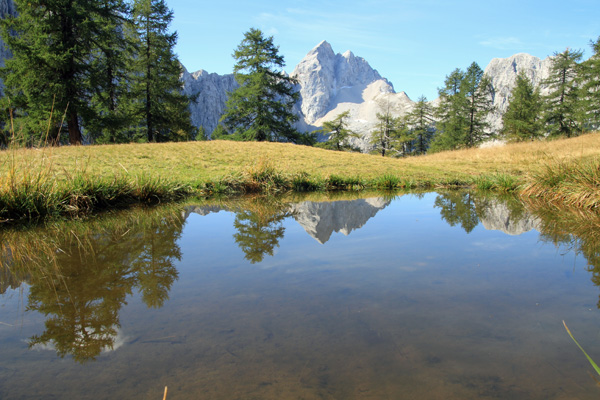
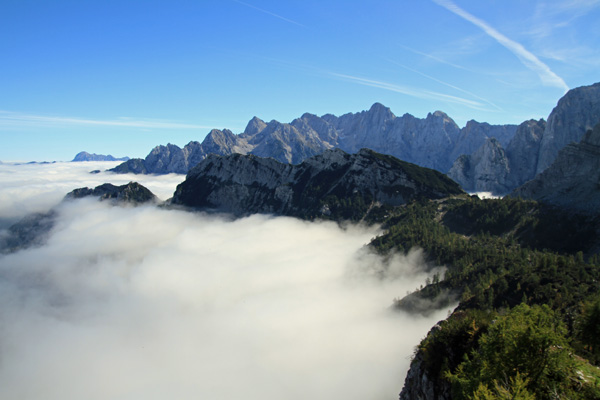
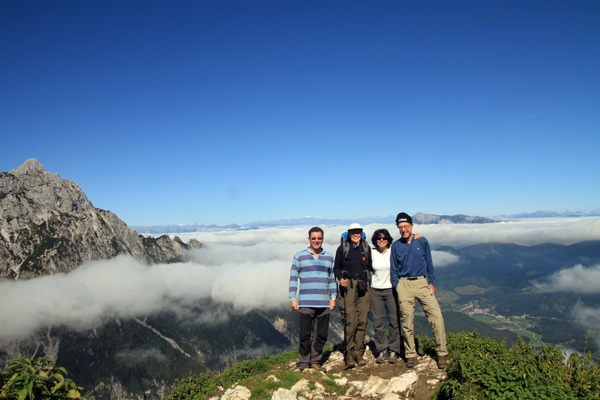
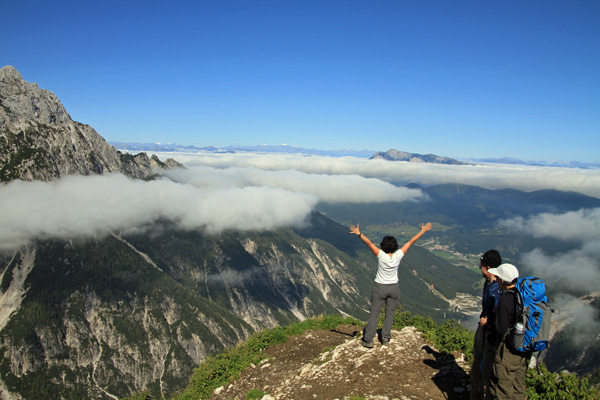
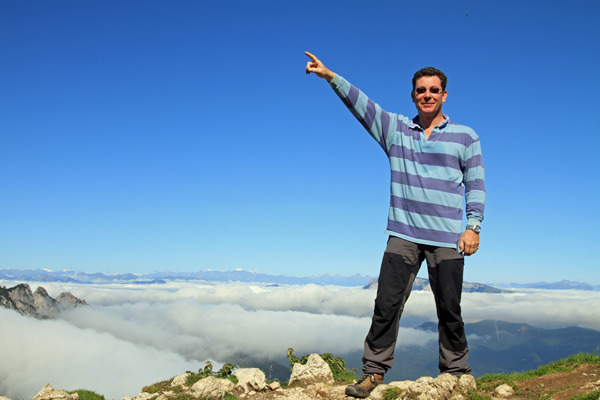
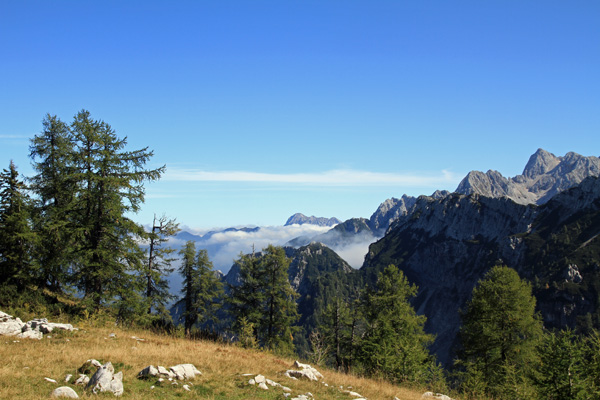
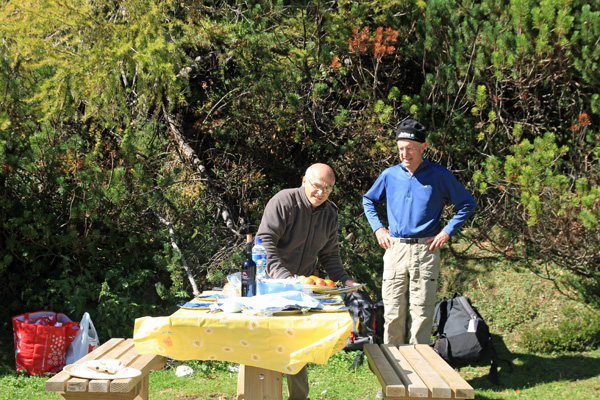
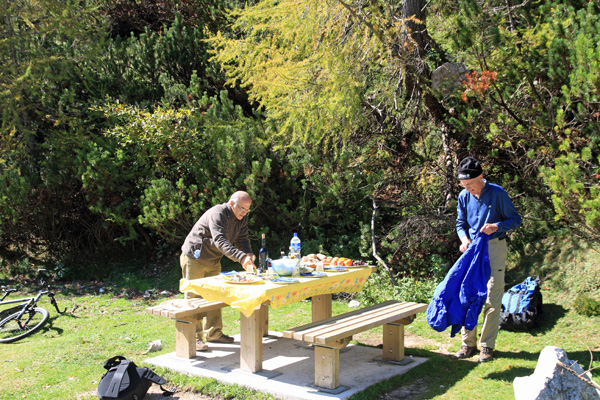
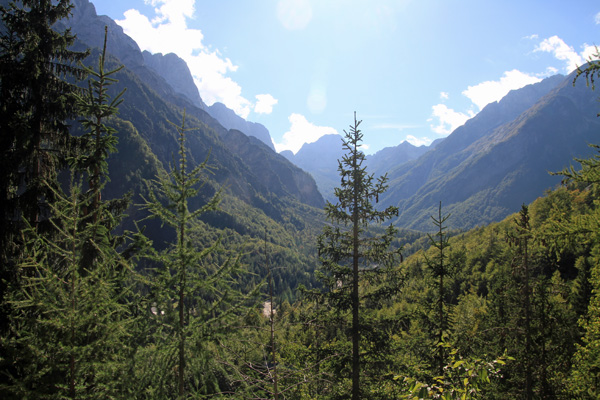

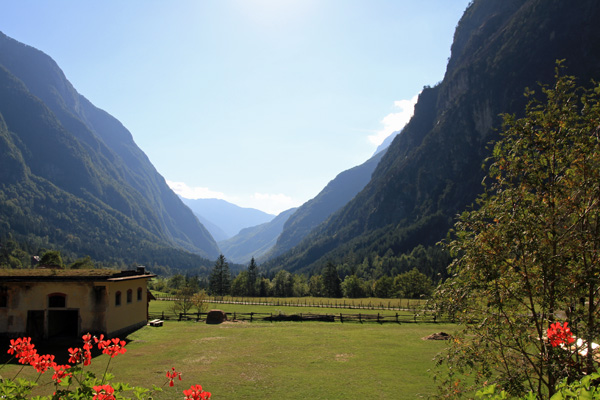
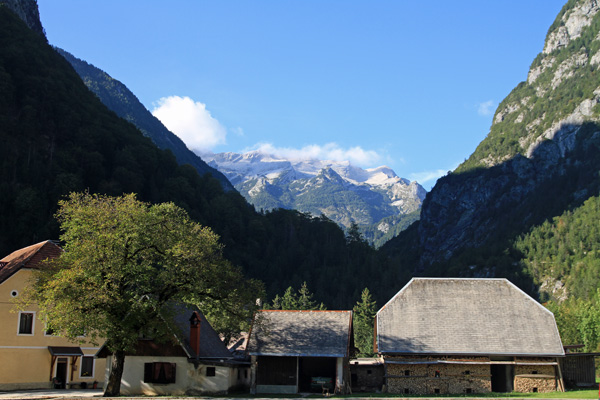
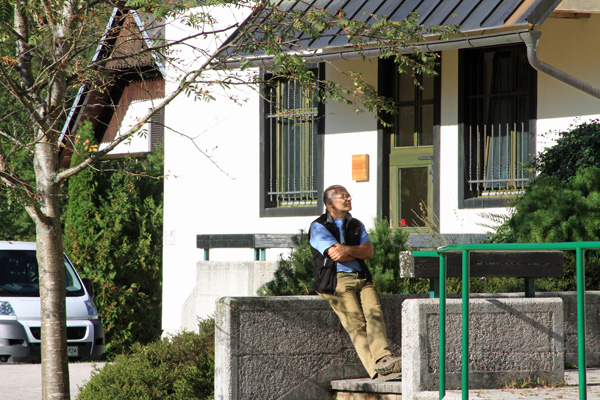

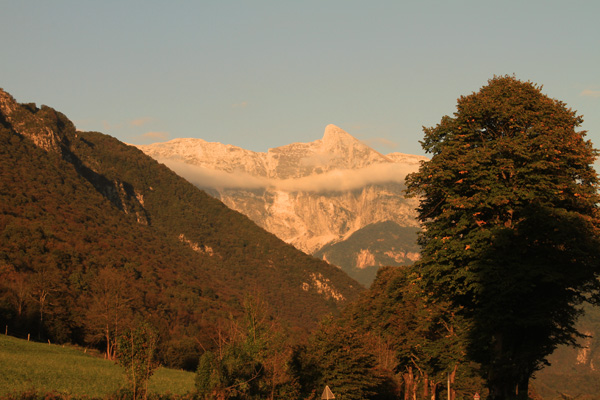
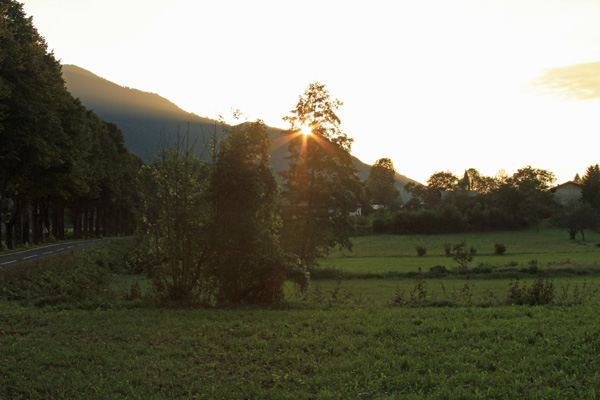
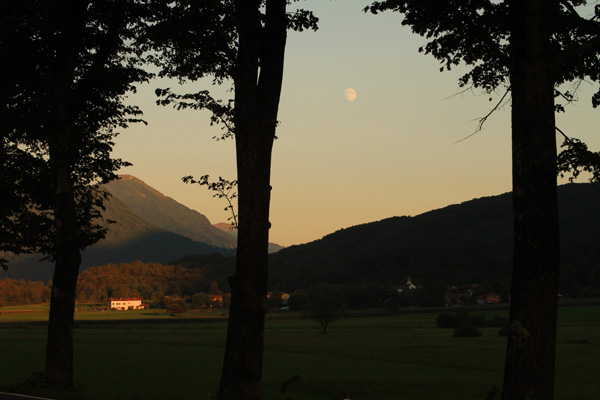
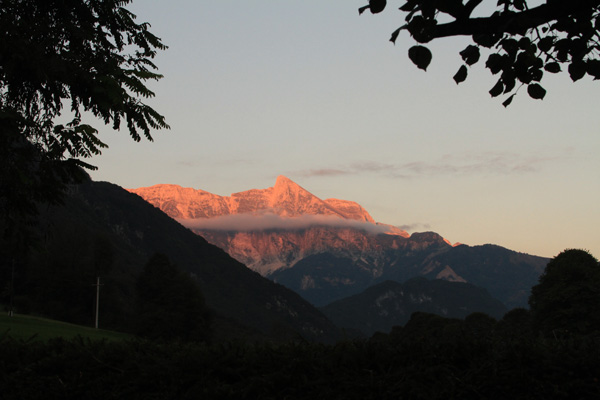
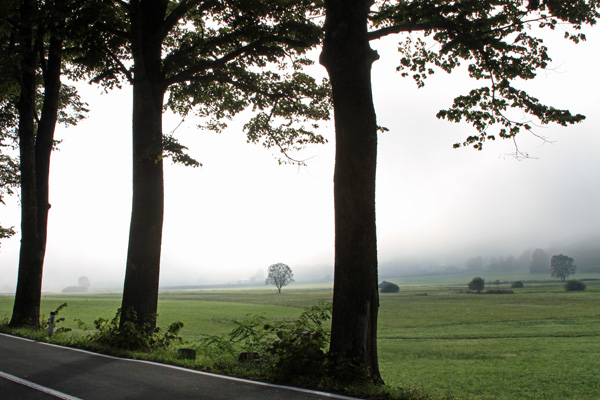
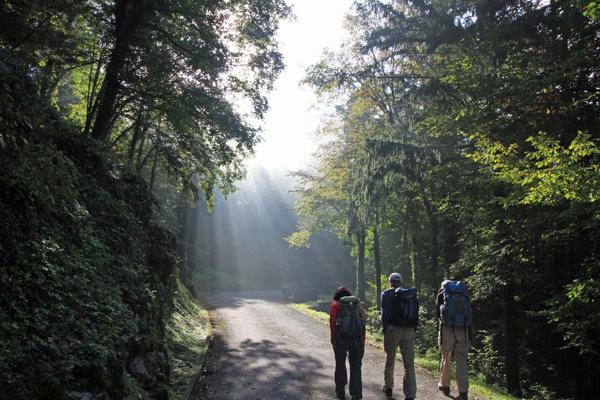
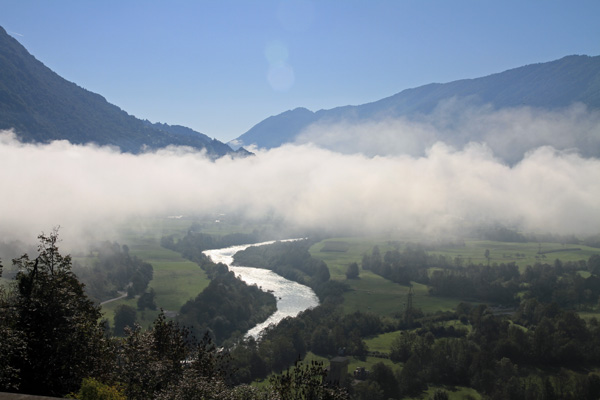
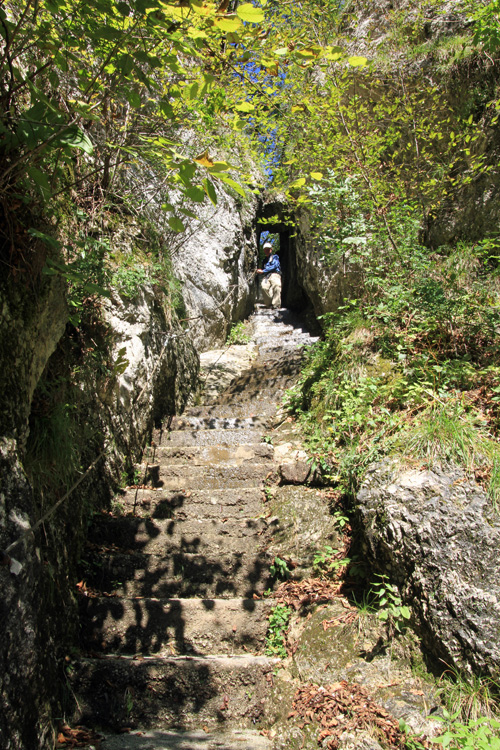


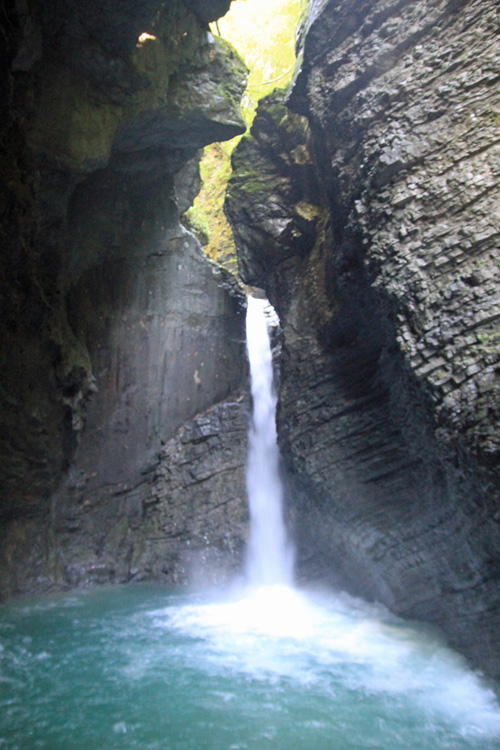
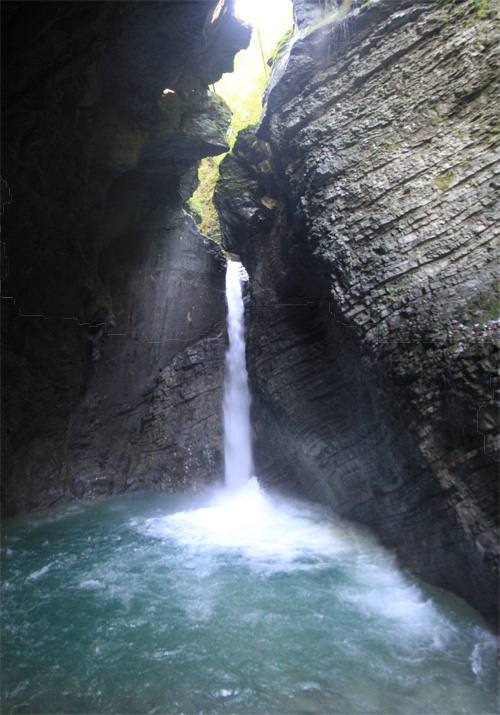
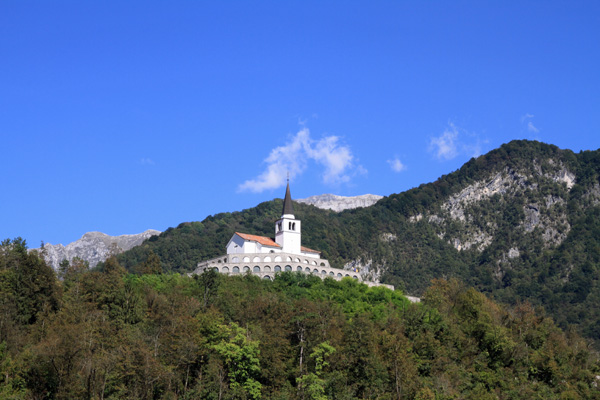


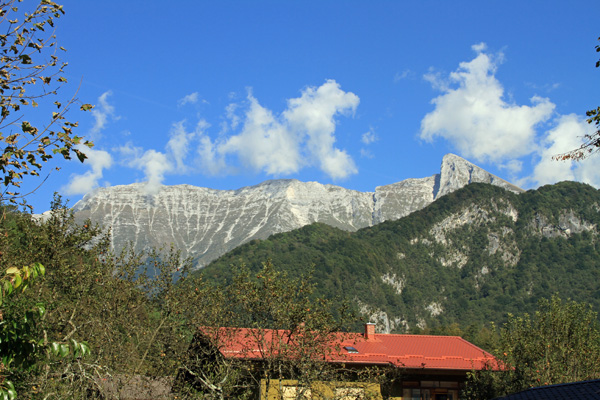
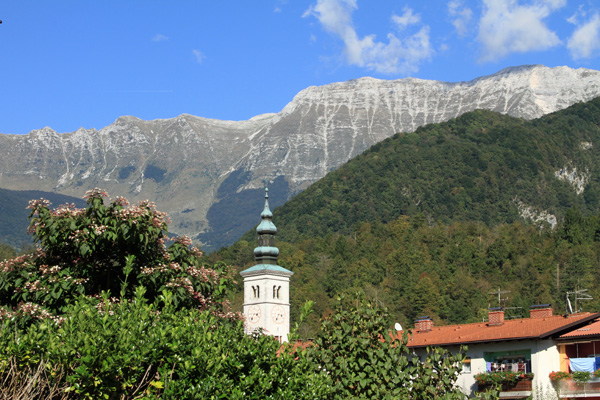

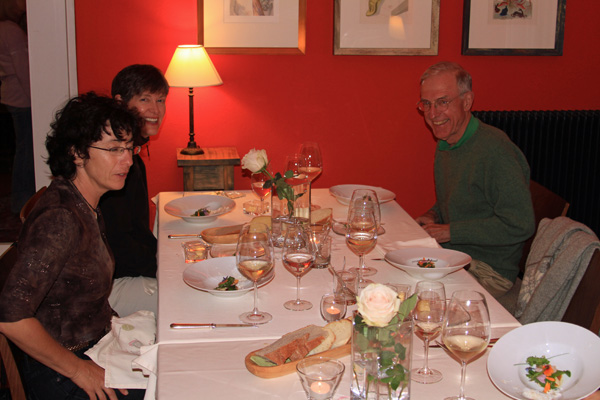
Pierre, I like the photos where you’re above the clouds. I would guess that the visibility of 5 metres in the sun doesn’t given the same apprehension as 5 metres in winter snow.